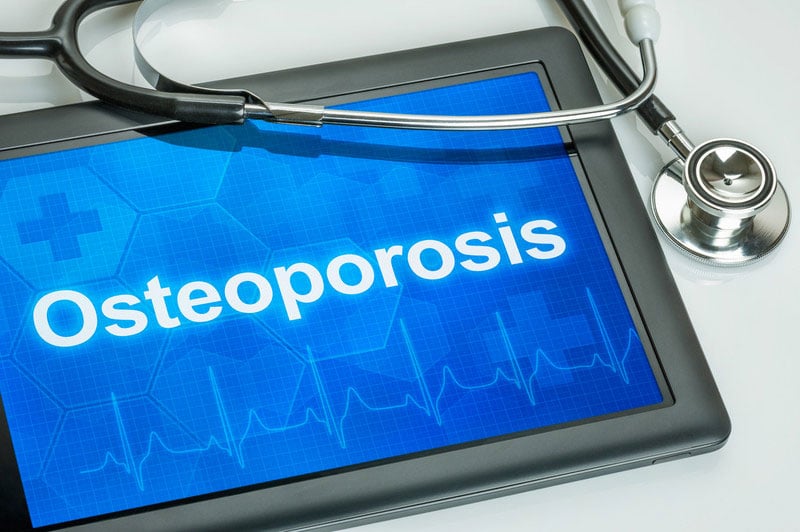Osteoporosis is a condition that happens when bone density decreases and the body stops producing as much bone as it did before. Weak bones can lead to fall or fracture mainly in the spine, hip, and wrists. According to the statistics from the International Osteoporosis Foundation, worldwide, osteoporosis causes more than 8.9 million fractures annually, resulting in an osteoporotic fracture every 3 seconds. Medical specialists treating this condition can rely on medical billing companies to meet their claim submission tasks and thus receive reimbursement on time.
Osteoporosis documentation should include details such as whether it is with or without current pathological fracture and history of pathological fracture, definition of the episode of care (e.g., initial, routine, or delayed healing), name of the bone fractured and laterality, as appropriate and identification of whether osteoporosis is age-related vs. other specific cause (e.g., chronic steroid use, vitamin deficiency), location and laterality (e.g., left or right) and indication of the precise classification (senile, posttraumatic or other).
Treatment for the condition aims at preventing the development of osteoporosis, maintaining healthy bone mineral density and bone mass, preventing fractures and reducing pain.
Osteoporosis Screening
Early detection of osteoporosis helps to prevent fractures. Screening for osteoporosis relies on bone density measurement (BDM) test that helps to estimate the density of bones and chances of fracture. A patient’s current BDM is compared to the BDM at age 30 and the difference is then calculated to determine the T-score. Depending upon the T-score, a patient may have osteopenia (low bone mass) or osteoporosis (very low bone mass).
- Z13.820 Encounter for screening for osteoporosis
A valid diagnosis code must also be given to indicate the reason for the test – for a postmenopausal female, vertebral fracture, hyperparathyroidism, or steroid therapy. While the T-score of -1.0 is considered as normal bone mass, score from -1.0 to -2.5 confirms Osteopenia and score from -2.5 or lower refers to Osteoporosis. Such bone mineral density tests are reported with certain CPT codes. Medicare Administrative Contractors will pay claims for screening tests when coded with one of the following CPT® codes: 77078, 77080, 77081, or HCPCS Level II code G0130.
- 77078 Computed tomography, bone mineral density study, 1 or more sites; axial skeleton
- 77080 Dual-energy X-ray absorptiometry (DXA), bone density study, 1 or more sites; axial skeleton (e.g., hips, pelvis, spine)
- 77081 Dual-energy X-ray absorptiometry (DXA), bone density study, 1 or more sites; appendicular skeleton (peripheral) (e.g., radius, wrist, heel)
- G0130 Single energy x-ray absorptiometry (sexa) bone density study, one or more sites; appendicular skeleton (peripheral) (e.g., radius, wrist, heel)
The National Osteoporosis Foundation (NOF) recommends women aged 65 or older and men aged 70 or older to have a bone density test. This is also necessary for patients who have an X-ray of their spine showing a break or bone loss in your spine, back pain with a possible break in spine, height loss of ½ inch or more within one year or with total height loss of 1½ inches from their original height.
ICD-10 Coding
ICD-10 codes for osteoporosis depend on its types such as
- Age related osteoporosis with current pathological fracture (Involutional, Postmenopausal, Senile and NOS osteoporosis)
- M80 Osteoporosis with current pathological fracture, identify the site of the fracture, not the osteoporosis
- M80.0- Age-related osteoporosis with a current pathological fracture
- Other osteoporosis with current pathological fracture (Drug induced, Idiopathic, Disuse, Post-oophorectomy, Postsurgical malabsorption and Posttraumatic)
- M80.8 Other osteoporosis with current pathological fracture
- Osteoporosis without current pathological fracture
- M81 Osteoporosis without current pathological fracture
- M81.0 Age-related osteoporosis without a current fracture (primary osteoporosis)
- M81.8 Other osteoporosis without current fracture (secondary osteoporosis)
However, location is not a component of the codes under category M81 because osteoporosis is a systemic condition.
A seventh digit added to the code indicates the episode of care. For instance, Osteoporosis ICD-10 Code “M80.022A” refers to Postmenopausal osteoporosis with current pathological fracture, left humerus, initial encounter for fracture. Medical coding outsourcing is an ideal option for busy physicians to focus on providing quality patient care, and at the same time get paid for the services provided.




